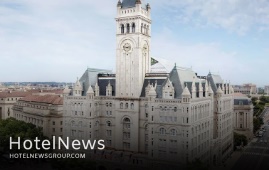
Donald J. Trump’s family business has an agreement to sell its marquee Washington hotel, reaching a deal to fetch at least $375 million for a property that prompted ethical scrutiny and struggled to make money even as it drew steady crowds of lobbyists, lawmakers and Trump loyalists. The deal so far is what is known as a purchase and sale agreement, meaning a final sale of the Trump International Hotel has not taken place and may not happen until early next year, according to three people with knowledge of the matter. The sale of the lease of the hotel, which operates out of a landmark federal building on Pennsylvania Avenue, comes after years of financial losses at the property, which opened in 2016, shortly before Mr. Trump was elected president. Still, with the significant price of the planned sale, the Trump family is expected to turn a profit on the overall investment. The buyer of the lease is CGI Merchant Group, a minority-owned real estate investment firm in Miami, according to the people briefed on details of the pending transaction, which was reported earlier by The Wall Street Journal. CGI is exploring a deal to rename the hotel, based in the Old Post Office building, under the Waldorf Astoria luxury brand. The sale must first be approved by the General Services Administration, the federal agency that controls the property. From the time of its opening, the hotel immediately drew crowds of Trump supporters and favor-seekers. For a businessman president, it was the ideal bridge between his two worlds: a Trump hotel five blocks from the Trump White House. This blurring between Mr. Trump’s business and his presidency fueled attacks from congressional Democrats who charged that he used the property as the hub of an influence-peddling operation.
Create: Nov 15, 2021 Edit: Nov 15, 2021 International News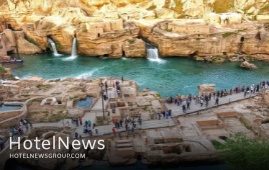
The UNESCO-registered Shushtar Historical Hydraulic System has been closed to visitors amid safety concerns after its western side was announced to be “unstable”. “Shushtar Historical Hydraulic System was closed to the public until further notice due to the unstable conditions of the western wall,” Mehr reported on Sunday. “Cultural heritage experts have warned for years about the instability of this part of the World Heritage,” the report said. Earlier in October, a local official announced that leakage of the site, which is known globally as a masterpiece of creative genius, is an immediate concern and needs to be restored. “To prevent water leakage in the historical structure, which could result in its destruction, short-term measures are taken,” the official said, Mehr reported. Studies and research are being conducted and meetings with consulting engineers are underway to find a way to cause the least damage to this ensemble, the official added. The ancient hydraulic system comprises bridges, weirs, tunnels, canals, and a series of ancient watermills powered by human-made waterfalls. It is named after an ancient city of the same name with its history dating back to the time of Darius the Great, the Achaemenid king. Inscribed on the UNESCO World Heritage list in 2009, the Shushtar Historical Hydraulic System may testify to the heritage and the synthesis of earlier Elamite and Mesopotamian knowhow. According to UNESCO, the ensemble was probably influenced by the Petra dam and tunnel and by Roman civil engineering. The property is as rich in its diversity of civil engineering structures and its constructions as in the diversity of its uses (urban water supply, mills, irrigation, river transport, and defensive system). The Shushtar Historical Hydraulic System testifies to the heritage and the synthesis of earlier Elamite and Mesopotamian knowhow; it was probably influenced by the Petra dam and tunnel and by Roman civil engineering. “The hydraulic system has been considered a Wonder of the World not only by the Persians but also by the Arab-Muslims at the peak of their civilization,” according to the UN cultural body. Furthermore, one of its main canals is a veritable artificial watercourse that made possible the construction of a new town and the irrigation of a vast plain, at the time semi-desert. UNESCO says that the Shushtar Historical Hydraulic System demonstrates outstanding universal value as in its present form, it dates from the 3rd century CE, probably on older bases from the 5th century BC. It is complete, with numerous functions, and large-scale, making it exceptional.
Create: Nov 15, 2021 Edit: Nov 15, 2021 Regional News
The Federal Communications Commission has authorized a satellite internet project from Boeing first proposed in 2017. Boeing can now move forward with building, launching, and operating its own broadband internet network from space, joining its main aerospace competitor SpaceX. Boeing’s plan involves placing 132 satellites into low Earth orbit at an altitude of 1,056 kilometers (about 656 miles). Another 15 will be launched to “non geostationary orbit” at an altitude between 27,355 and 44,221 km (16,998 to 27,478 miles). The company says it wants to use the satellites to offer “broadband internet and communications services to residential consumers, government and business users in the United States, Puerto Rico and the US Virgin Islands” while the network gets built out, and on a global basis once it’s complete. All 147 satellites would broadcast in the V-band, a higher-frequency slice of the wireless spectrum than the Ka and Ku bands used by SpaceX’s Starlink network or Amazon’s yet-to-be-deployed Project Kuiper satellites. Using V-band could allow for faster data transfer rates but runs a greater risk of interference because the higher frequencies have more trouble penetrating solid objects. (SpaceX has plans to use the V-band in some future satellites, and so does OneWeb. The Ka and Ku bands are also used by satellites that provide in-flight internet on commercial airlines.) SPACEX HAD TOLD THE FCC IT WAS CONCERNED BOEING’S NETWORK WOULD CROWD LOW EARTH ORBIT SpaceX has previously expressed concern that Boeing’s proposal to launch into already-crowded low orbits could increase the risk of a collision with other satellites. In 2019, SpaceX said to the FCC that it believed Boeing’s network would create a “clear danger of harmful interference,” according to Reuters. SpaceX’s Starlink satellites orbit the Earth at an altitude of around 550 km (roughly 342 miles), which is around where OneWeb’s internet satellite constellation can be found (and where Amazon’s satellites will go once they launch). SpaceX and OneWeb narrowly avoided a collision earlier this year. Boeing now has six years to launch half of its satellite constellation and nine years to deploy the entire network. The company had asked the FCC to loosen those requirements — it wanted to only commit to launching five satellites in the first six years, and asked for a 12-year window to launch the entire constellation — but the commission denied that request, according to the order published Wednesday. By comparison, SpaceX and Amazon have far grander plans for their networks, with each consisting of thousands of satellites. Boeing is a major satellite manufacturer, and so it spent the years before and after its initial 2017 proposal selling to early space-based internet providers as the market matured. But providers are now expected to collectively generate more than $50 billion by 2031, which could explain why Boeing bothered slogging through four years of the approval process.
Create: Nov 5, 2021 Edit: Nov 5, 2021 International News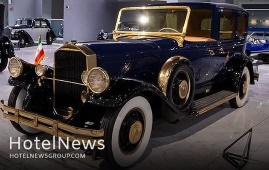
Following years of restoration and renovation, Iran Historical Car Museum in western Tehran has reopened its doors to the public, featuring a magnificent collection of rare classic, vintage, sports cars, carriages, and motorcycles.Highlights of the museum include a gold-plated limousine, the world’s only Panther-Laser car produced, a Silver Ghost Rolls-Royce once owned by the Qajar King, Ahmand Shah (r. 1909 – 1925), as well as a royal carriage belonging to Nasereddin Shah of Qajar.In an interview with the Tehran Times on Sunday, the director of the museum Mohammad Fa’al, said: “The 1922 Rolls-Royce, a Morris Oxford Bullnose, and a Fiat Tipo 519 constitute the three oldest cars of the collection.”“The building of the museum underwent restorations as of 2005 as you can see the images of the restoration of the building and cars have been installed on the walls of the museum. Moreover, we refurbished a dozen other cars from our treasury and added them to the newly-opened museum.”“The museum has four main halls, the first of which bears the oldest vehicles of the collection, amongst them the Rolls-Royce Silver Ghost that was belonging to Ahmad Shah Qajar,” he said. Hall 2 is dedicated to American and Mercedes-Benz vehicles, and Hall 3 is devoted to the official and ceremonial cars, which include various models of Rolls-Royces and Mercedes. Hall 4 is also dedicated to sports and super sports cars. In response to a question about the number of vehicles, the director said: “There are currently 102 cars in the treasury in addition to 55 cars that are currently on display.” “Of course, what you now see in here is not all our cars, and we have a treasury that acts as a support for the museum, and it has cars that are being renovated over time and replaced with these existing cars in order to preserve the charm of the museum.” The museum owns the largest collection of Mercedes-Benz 600 in the world. “We have the largest collection of Mercedes-Benz 600 in the world with 21 units. The Mercedes-Benz Museum itself has three units of the 600 model…. the Mercedes-Benz 600 itself is designed and built with different rooms and its function is only for ceremonies and this model has different rooms some having hardtop or custom-made sunroofs,” the director of the museum explained. He said that the museum owns all models of Mercedes-Benz 600, which is very unique. “Moreover, we have all models of Mercedes-Benz 600 that have been produced by the German company; four of which are on display here in the museum, and 17 are being kept inside the treasury.” Furthermore, Fa’al added 21 classic Rolls-Royces are being kept in the museum and its treasure trove. “Home to 21 [classic] Rolls-Royces, Iran Historical Car Museum is the second-largest treasure trove of those vehicles after the Rolls-Royce Museum.” Talking about the values of cars he explained, “all these cars are valuable and it is impossible to say which one is better. We can say which one is more beautiful and which has a more attractive design, but we cannot say which is more valuable.” “However, the classification of cars in terms of value depends on several factors: one is the age of the car, the other is its manufacturer brand and design technology. And there are decorative items used in cars. For instance, a car in which is gold plated and is decorated with jewelry is obviously more valuable than an ordinary one….” Responding to a question concerning restoration, Fa’al said all the processes of rebuilding cars are fully documented and all phases are photographed and evidence is available. The age of the classic cars According to Brinatica, the decade 1925–35 was notable not only for the appearance of many new small automobiles but also for the building of many ultra-large ones. The years from 1925 to 1948 are cited by collectors of automobiles as the “classic years,” a period that saw the rise of the luxurious fast motorcar to a peak it seems unlikely to reach again. The first name in this field was Rolls-Royce Ltd., founded in 1906. Most Rolls-Royce chassis are designed for limousine and large sedan bodies, but the firm once made a comparatively light car (called the Twenty), and it has throughout its history produced fast models in addition to its regular line—e.g., after World War II, the Continental, built under the Bentley Motors Ltd. label. Other motorcars of this type included the Hispano-Suiza of Spain and France; the Bugatti, Delage, Delahaye, Hotchkiss, Talbot (Darracq), and Voisin of France; the Duesenberg, Cadillac, Packard, and Pierce-Arrow of the United States; the Horch, Maybach, and Mercedes-Benz of Germany; the Belgian Minerva; and the Italian Isotta-Fraschini.
Create: Nov 3, 2021 Edit: Nov 3, 2021 Regional News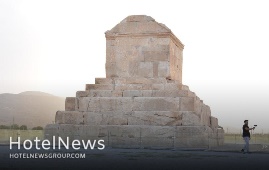
Iranian government has allocated a sum of 200 billion rials (about $4.7 million at the official exchange rate of 42,000 rials per dollar) to develop tourism infrastructure at the UNESCO-designated Pasargadae. A budget of 200 billion rials has been allocated to Pasargadae after President Ebrahim Raisi visited the Achaemenid site earlier in October, a senior tourism official, Javad Vahedi, said on Friday. The Pasargadae complex, as a magnificent World Heritage site, has a high tourism potential in the field of cultural and historical tourism, and we must plan to attract more tourists,” the official explained. Situated about 50 km north of Persepolis, Pasargadae was the first dynastic capital of the Achaemenid Empire, founded by Cyrus II the Great, in Pars, the homeland of the Persians, in the 6th century BC. Its palaces, gardens, and the mausoleum of Cyrus are outstanding examples of the first phase of royal Achaemenid art and architecture and exceptional testimonies of Persian civilization. The UNESCO World Heritage site is also home to a complex water supply system for the time that comprises cisterns, tunnels, underground canals, and ducts, which are locally known as qanats. It is believed that the development of qanats began about 2,500 or 3,000 years ago in Persia (Iran), and the technology spread eastward to Afghanistan and westward to Egypt. Although new qanats are seldom built today, many old qanats are still used in Iran and Afghanistan, chiefly for irrigation. The 160-ha archaeological site of Pasargadae presents some of the earliest manifestations of Persian art and architecture. It includes, among other monuments, the compact limestone tomb on the Morgab plain that once held Cyrus the Great’s gilded sarcophagus; Tall-e Takht (“Solomon’s Throne”), a great fortified platform built on a hill and later incorporated into a sprawling citadel with substantial mud-brick defenses; and the royal ensemble, which consists of several palaces originally located within a garden layout (the so-called “Four Gardens”). Pasargadae became a prototype for the Persian Garden concept of four quadrants formally divided by waterways or pathways, its architecture characterized by refined details and slender verticality. Pasargadae stands as an exceptional witness to the Achaemenid civilization. The vast Achaemenid Empire, which extended from the eastern Mediterranean and Egypt to the Hindus River in India, is considered the first empire to be characterized by a respect for the cultural diversity of its peoples. This respect was reflected in the royal Achaemenid architecture, which became a synthesized representation of the empire’s different cultures. Pasargadae represents the first phase of this development into a specifically Persian architecture which later found its full expression in the city of Persepolis.
Create: Oct 31, 2021 Edit: Oct 31, 2021 Regional News
Cycas Hospitality, the award-winning pan-European operator, has signed a deal to operate London Town Group’s portfolio of upscale boutique hotels in the UK capital. The London Town Group of Companies, founded by Koolesh Shah, is one of the UK’s leading, privately-held real estate and energy investment companies. The agreement sees Cycas welcome its first two Mercure-branded hotels – part of Accor – to its portfolio. While the 72-room Mercure London Hyde Park – set within a Grade II listed building – recently completed a multi-million-pound refurbishment, the 86-room Mercure London Paddington is scheduled to start a fully renovation programme next year. As part of the extensive works, the hotel will upgrade its ground floor food and beverage facilities and transform its top floor into a rooftop bar.As Cycas’s seventh IHG-branded property, the 64-room Hotel Indigo London Paddington becomes its first Hotel Indigo in London and joins Hotel Indigo Dundee as its second in the UK. All three properties offer a wide range of dining options, meetings facilities and state-of-the-art fitness centres, all just a short walk from Hyde Park and Paddington Station, whose access will be further boosted with next year’s opening of Crossrail and the Elizabeth Line. Cycas has appointed Tanja Furby as Cluster General Manager for the three London hotels. A seasoned operator who has worked across a wide range of leading hospitality brands, Tanja’s commercial skills, leadership and local knowledge will help Cycas maximise each property’s customer offering. Koolesh Shah, Founder of London Town Group, said “As our business diversifies and grows, I felt now was the time to bring on board a recognised industry leader in hotel operations to partner on the transformation journey of our hotels. “We’ve always prided ourselves on our collection of leading branded-boutique hotels, and we’re confident that Cycas’s track-record in delivering the highest hospitality standards will ensure we can continue to give our guests the best possible experience.” Matt Luscombe, Chief Executive Officer at Cycas Hospitality, said: “I’ve known and admired Koolesh and his team for many years, since he opened the first Hotel Indigo outside of North America in 2009. Over the last decade, London Town Group has been synonymous with commercial and operational excellence. “With their central locations and exceptional transport links, these three hotels are ideally positioned to capitalise on the recovery in business and leisure travel. We’re proud and excited to begin this partnership together. The deal follows continued expansion for Cycas Hospitality, which has now opened or taken over 17 hotels in 12 months, despite the challenges posed by the Covid-19 pandemic,
Create: Oct 31, 2021 Edit: Oct 31, 2021 International News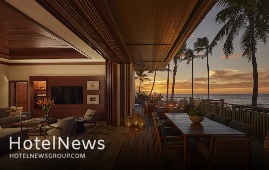
Four Seasons Resort Hualalai announces the culmination of its more than USD 100 million property-wide renovation with the unveiling of its top three villas – Hawaii Loa Presidential Villa, Makaloa Villa and Ho`onanea Villa – the largest and most luxurious villa accommodations in Hawaii. These villas are the epitome of the Resort’s signature Specialty Suite program, featuring twelve of the Resort’s bespoke accommodations with exclusive benefits and inclusions. The only Forbes Five-Star and AAA Five-Diamond Resort on the Island of Hawaii, the Resort’s multi-million-dollar renovation marks the Resort’s largest renovation since its debut 25 years ago. The transformation includes an enhancement of all guest rooms and suites; a new, elevated infinity pool and lounge deck at King’s Pond, Hualalai’s 1.8-million-gallon (6.8 million litre) swimmable aquarium; the Kumu Kai Marine Center; a new gourmet poolside menu from Executive Chef Richard Polhemus; a transformation of the signature Hualalai Golf Course; and the launch of the Hualalai Golf Hale, a 3,000 square-foot (280 square metre) instruction, practice and entertainment facility – the only facility of its kind in Hawaii. Helmed by San Francisco-based BAMO, the design firm perfectly captured the authentic Hawaiian experience and beloved spirit of Hualalai. “With the conclusion of our renovation, we are proud to begin this iconic Resort’s next chapter by defining a new level of luxury in Hawaii,” says General Manager Charlie Parker. “The most dramatic update was to our three largest villas, responding to our guests’ increased demand for this calibre of accommodations in Hawaii. These distinctly designed villas truly serve as a home-away-from-home for our guests and their extended families and friends.” Each villa has been expanded to add a second level, indoor-outdoor living space, and private plunge pools. Thoughtful, unique design elements are showcased throughout the spacious accommodations, with the incorporation of local artwork, slate floors, glass pocket doors opening the living area to the outdoors and natural hardwood trim. The aesthetic is personable and warm with a residential quality, designed to provide a private oasis with the amenities and service Hualalai is known for.
Create: Oct 27, 2021 Edit: Oct 27, 2021 International News
IHG® Hotels & Resorts, one of the world’s leading hotel companies, has signed a management agreement with notable real estate developer, Dinesh Kumar Choudhary (HUF) for a new hotel – Holiday Inn Express & Suites Jaipur Karoli Bagh located at Gopalpura Byepass, in the capital of Rajasthan. The brownfield hotel featuring 141 keys is expected to be operational by the first quarter of 2023. Jaipur is the largest city in Rajasthan and one of the most popular leisure destinations, both for domestic and international travellers. It is an integral part of the Golden Triangle, a prominent tourist circuit connecting the national capital Delhi, Agra and Jaipur, and is also a preferred wedding destination in India. Furthermore, the city houses numerous industries and is considered as the economic capital of Rajasthan. With the new signing of Holiday Inn Express & Suites Jaipur Karoli Bagh, the city will now have three IHG hotels between Crowne Plaza, Holiday Inn and Holiday Inn Express, catering to varied guest profiles. Holiday Inn Express & Suites Jaipur Karoli Bagh will be located on the Gopalpura Bypass road, at a convenient 15-minute drive from the airport. The hotel will also be at a short driving distance from the city centre, business district, tourist attractions, as well as key dining and shopping destinations. With excellent visibility and access, Holiday Inn Express & Suites Jaipur Karoli Bagh will provide a convenient stay experience to both business and leisure travellers. The newly signed hotel will feature well-appointed modern guest rooms and all the necessary facilities for a comfortable stay experience. The hotel will also have the brand’s signature ‘Great Room’, ‘Small Bar’, a specialty restaurant and a lounge to relax and unwind. Other essential facilities will include a fitness room, and meeting spaces for business and social gatherings. Commenting on the new development, Sudeep Jain, Managing Director, South West Asia, IHG Hotels & Resorts, said, “We are thrilled to announce the signing of a new Holiday Inn Express & Suites hotel in Jaipur and solidify our presence in the state of Rajasthan. With a rich culture, history and cuisine, Jaipur is one of the most popular tourist destinations of India. With diverse guest profiles visiting the city, there is an increasing need for mainstream accommodation, and we are confident that Holiday Inn Express & Suites Jaipur Karoli Bagh will be a great choice for travellers looking for a simple and engaging hotel stay experience. He added: this new signing is also in line with our strategy to expand our ‘essentials collection’ across key markets in India and further strengthen our mainstream presence in the country, in line with market demands.” Mr. Dinesh Kumar Choudhary, Head of Hindu Undivided Family (HUF) added, “We are excited to partner with an internationally and domestically known and trusted hospitality brand like IHG. With a combination of an excellent location, the power of IHG’s distribution system, strong loyalty programme and expertise in the hospitality segment, we are confident that Holiday Inn Express & Suites Jaipur Karoli Bagh will emerge as a popular choice amongst the travellers visiting Jaipur.” Holiday Inn Express is one of IHG’s fastest-expanding hotel brand. It is designed for the smart travellers who are looking for a simple, yet engaging place to reconnect and refresh. IHG® currently has 41 hotels operating across five brands in SWA, including Six Senses, InterContinental Hotels and Resorts®, Crowne Plaza®, Holiday Inn® , Holiday Inn Resort® and Holiday Inn Express®, and a strong pipeline of 50 hotels due to open in the next 2-3 years.
Create: Oct 25, 2021 Edit: Oct 25, 2021 International News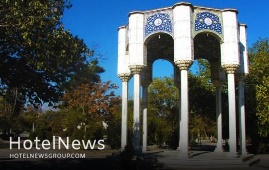
Ibn Babawayh is a vast historical cemetery located in Rey, southern Tehran, in which many Iranian figures have been laid to rest. It is named after Ibn Babawayh who was an Islamic theologian and the author of one of the “Four Books” that are the basic authorities for the doctrine of Twelver Shi’ism. Also called Sheikh Saduq, Ibn Babawayh, whose full name is given as Abu Jafar Muhammad ibn Abu al-Hasan Ali ibn Husayn ibn Musa al-Qummi, was born in c. 923 CE, Khorasan, northeast Iran, and he died in Ray in 991. Originally built during the reign of Samanids (819-999), the cemetery has been ruined many times, and for various reasons, such as the Mongol invasion (1219-1221 CE), several civil wars, and also natural disasters. There is an interesting story behind the construction of the current cemetery which occurred during the Qajar era. Once, as Haj Mohammad Baqer Khansari writes in Rozat al-Janat, heavy rain destroyed and made a hole in the old cemetery. Workers went to repair the destruction, but they found an intact corpse and an inscription in the cellar of the mausoleum. Based on the inscription, the mausoleum was built 800 years ago. By the way, the news of finding an intact corpse in the mausoleum of Sheikh Saduq reached the court and the king sent an envoy to the site to confirm the truth of the story. His current tomb consists of a groin stone vault with eight pillars decorated with beige and blue tiles and is the site of pilgrimage for the Muslims. In addition, the atmospheric cemetery built around the tomb of Sheikh Saduq is one of the most revered graveyards in the ancient town of Rey. Wandering around the cemetery, you come across the graves of famous Iranian figures like Gholam-Reza Takhti, the popular Olympic gold medalist wrestler, Ali-Akbar Dehkhoda, the well-known linguist, poet, and scholar, Hossein Behzad, the eminent miniaturist, Jalal Al-e Ahmad, the contemporary writer, and many others. There used to be many private family mausoleums featuring beautiful historical buildings in Ibn Babawayh, many of which are destroyed now due to urban development projects. Rey was one of the capital cities of the Parthian empire (3rd century BC–3rd century CE) and it was captured by the Muslim Arabs in 641 CE. During the reign of the Muslim caliph al-Mahdi in the 8th century, the city grew in importance until it was rivaled in western Asia only by Damascus and Baghdad. According to Britannica, Islamic writers described it as a city of extraordinary beauty, built largely of fired brick and brilliantly ornamented with blue faience (glazed earthenware). It continued to be an important city and was briefly a capital under the rule of the Seljuqs, but in the 12th century, it was weakened by the fierce quarrels of rival religious sects. In 1220 the city was almost destroyed by the Mongols, and its inhabitants were massacred. Most of the survivors of the massacre moved to nearby Tehran, and the deserted remnants of Rey soon fell into complete ruin.
Create: Oct 25, 2021 Edit: Oct 25, 2021 Regional News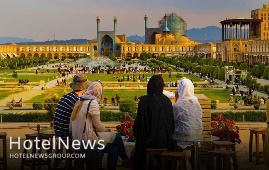
Iran's tourism industry has made every effort to stand on its own two feet despite the considerable damage caused by the virus pandemic. A country’s prosperity depends on its economic and social development, and the tourism industry plays a key role in achieving this goal, the president of Iran’s University of Science and Culture Seyyed Saied Hashemi has said. He made the remarks during the two-day symposium of One Hundred Years of Iranian Tourism, which came to an end on Wednesday. After the coronavirus crises, tourism can hopefully be a positive influence on people’s lives, he added. Many nations owe their social and economic progress to [their] tourism [industries], so it is hoped that this symposium and such events can provide a meaningful solution for the new [Iranian] government, he noted. Due to the lack of adequate coordination and cooperation between scientific institutions on the one hand and policy-makers on the other hand, the country may have faced many problems in the tourism industry during this century, and that is why it could not get enough benefit from the tourism despite having good potential, he mentioned. Another speaker at the event, Mohammad Hossein Imani Khoshkhu, the head of the industrial park for science also said there is no connection between tourism sectors in the country, while all organizations and devices must help each other to develop tourism. For instance, currently, medical tourism does not exist in the country, but there are international patients and the medical tourism activists have now become taxi drivers at airports instead of activists for related tourism, he added. Back in July, ISNA reported that Iran’s tourism industry has suffered a loss of some 320 trillion rials ($7.6 billion at the official exchange rate of 42,000 rials per dollar) since the outbreak of the coronavirus pandemic. The pandemic has also ruined more than 44,000 jobs in the once budding travel sector of the country, the report added. As a result of the outbreak of the coronavirus in Iran and the subsequent unemployment and financial losses, accommodation centers suffered the most. These statistics cover the period between February 2020 and the spring of 2021. Only months into the outbreak, Zarghami’s predecessor, Ali Asghar Mounesan, lamented that the number of foreign travelers to Iran was drastically plunged due to the pandemic. “Tourism of the country was growing before the corona [outbreak], its revenues reached $11.7 billion in 2019, which accounted for 2.8% of GDP, nearing the average share of tourism in the world GDP, which was 3.2 percent,” Mounesan said. He added 8.7 million foreign nationals visited Iran during the [Iranian] year (1398), adding that Iran was ranked as the second fastest-growing country in tourism based on data compiled by the World Tourism Organization. So far, panels of travel experts have mapped out new marketing strategies hoping the sector would get back on its feet once again. Earlier this year, the Head of the Iranian Tour Operators Association Ebrahim Pourfaraj asked the government to issue tourist visas for the international applicants who have been fully vaccinated against COVID-19. “The Ministry of Health and the National Headquarters for Coronavirus Control can at least agree that the international tourists who have received the [second dose of] coronavirus vaccine would be allowed to enter Iran.” The expert lamented that the continuation of such a trend would result in losing international tourist markets more than before. “Or at least they should make it clear so that we can respond appropriately to foreign companies and tourists to not to miss the international tourist markets more than before.” Iran is potentially a booming destination for travelers seeking cultural attractions, breathtaking sceneries, and numerous UNESCO-registered sites. Under the 2025 Tourism Vision Plan, Iran aims to increase the number of tourist arrivals from 4.8 million in 2014 to 20 million in 2025. Even before the pandemic, Iran’s tourism was already grappling with some challenges, on top of those Western “media propaganda” aimed at scaring potential travelers away from the Islamic Republic. Some experts believe Iran is still somehow “unknown” for many potential travelers due to such a “media war”. They, however, consider bright prospects for the tourism sector of the country if it vigorously pursues comprehensive strategies to counter U.S.-led propaganda and strict sanctions, yet does its best to loosen tough travel regulations.
Create: Oct 25, 2021 Edit: Oct 25, 2021 Regional News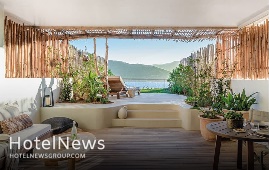
Welcome to our annual World’s Best Luxury Hotel Brands report. This is not just another World’s Best list. LTI – Luxury Travel Intelligence – has taken the past 12 months to apply the perfect assessment process: a rigorously defined algorithm that measures the performance and values of luxury hotel brands. This year, our algorithm has 131 touch points relevant to the luxury hotel sector. Each has its own weighted score value with a total maximum accumulative score of 4736. The touchpoints relate to overall brand performance, rather than the performance of individual properties. It is all about a brand’s ability to deliver: its passion, commitment, ethos and values, as well as the quality of its management and staff. Continuing investment and how well it is executed is also a major factor, particularly regarding new properties and the refurbishment of existing ones. This year’s results are reflected as percentages, with last year’s positions in brackets. 1. Six Senses 83.3% (1) 2. Mandarin Oriental 82.6% (5) 3. Auberge 81.8% (3) 4. Aman 81.4% (2) 5. Belmond 79.9% (4) 6. One&Only 77.0% (6) 7. Oetker Collection 75.7% New Entry 8. Four Seasons 74.1% (8) 9. Rosewood 73.5% (7) 10. Raffles 72.7% New Entry 11. Viceroy 72.2% New Entry 12. COMO 71.0% (10) Other brands that rated sufficiently to be monitored throughout the year are (in alphabetical order) Alila, Anantara, Banyan Tree, Dorchester Collection, Firmdale, Jumeirah, Leela, Oberoi, Park Hyatt, Peninsula, Ritz Carlton, Rocco Forte, Shangri-La, Soho House, St. Regis, Taj, The Luxury Collection. Brands that currently have less than ten properties (our minimum requirement) but rate highly when applying our algorithm are (in alphabetical order) Airelles, Althoff Collection, Bulgari, Capella, Cheval Blanc, Maybourne, Montage, Nikki Beach, Pendry, Soneva. About The World’s Best Luxury Brands ReportNo other organisation connects with the global luxury hotel industry as LTI does. Our researchers engage with everyone from CEOs of the brands we have rated to thousands of managements, staff and guests. This is all part of the process for creating our destination led reports for our members (affluent, discerning travellers) but it also allows us to utilise our findings to create this unique report. Every year the process starts again – the results from previous years have no bearing on the following year. This does inevitably lead to volatility in each year’s results (such as this year), but this is a dynamic sector and we want to reflect what is really happening out there. Six Senses: Worlds Best Luxury Hotel BrandWe continue to be very impressed with Six Senses. It has an authentic blend of wellness, sustainability, warm hospitality and crafted guested experiences. Also, its leadership is exemplary. The recent addition of Neil Palmer as Chief Operations Officer will bring boundless experience, energy and further integrity to the brand. New EntriesWe have been tracking Oetker Collection for several years while they have been building an exceptional portfolio of globally renowned hotels. We have been particularly impressed with the meticulously rebuilt of The Eden Rock in St Barths and their creation of The Woodward, a 26 room all-suite hotel on the shores of Lake Geneva, which opened in September. Raffles, with a new CEO at the helm, has been quietly creating a raft of impressive new properties across the globe. Viceroy has also shown great courage and commitment to building a global modern luxury hotel brand offering intuitive service, authentic experiences and provocative design. Covid-19 Impact Our algorithm has been suitably adjusted to accommodate the multitude of Covid- related challenges that luxury hotel operators have faced during 2020 and 2021. This also accommodates how brands are responding to a significant shift in Covid- driven demands from the luxury traveller.
Create: Oct 19, 2021 Edit: Oct 19, 2021 International News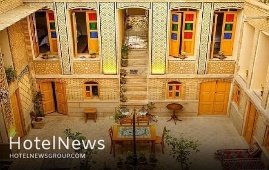
Over 11,000 job opportunities are estimated to be generated by implementing 245 tourism-related projects across the northeastern Khorasan Razavi province, the deputy provincial tourism chief has announced. Upon the completion of the ongoing projects that have been underway for about ten years, a total of 11,500 jobs will be provided for the locals, CHTN quoted Ahmad Dinari as saying on Sunday. Some 500 trillion rials (about $12 billion at the official exchange rate of 42,000 rials per dollar) have been invested in the mentioned projects so far, the official added. The projects include hotels, apartment hotels, guesthouses, travel complexes, recreational centers, and villages specifically developed for health tourism, he noted. He also noted that foreign investment in the tourism sector of the province amounted to $90 million last year. Mashhad, the capital of Khorasan Razavi province, is Iran’s holiest and second-largest city. Its raison d’être and main sight is the striking massive shrine complex of Imam Reza (AS), the eighth Shia Imam Dozens of five-star hotels and hostels are dotted across Mashhad. The city has also the highest concentration of water parks in the country, and it also embraces a variety of cultural and historical sites that are generally crowded. The metropolis is also a good place to buy top handwoven rugs and carpets, and it’s a staging post for travel to Turkmenistan, Afghanistan, and little-touristic Khorasan regions. Before the coronavirus puts almost everything on lockdown, Mashhad, played host to thousands of travelers and pilgrims who come from various Iranian cities, neighboring countries, and even across the globe to visit the holy shrine. According to official statistics, some 37 million Iranian pilgrims and travelers visited the shrine city of Mashhad during the first ten months of the past Iranian calendar year 1398 (March 21, 2019- March 10, 2020). Of whom some eight million came by road, six million by rail, 3.8 million by air, and 18 million by private cars.
Create: Oct 19, 2021 Edit: Oct 19, 2021 Regional News
